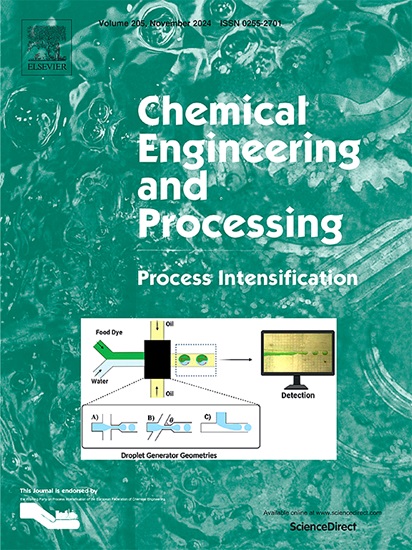Model analysis of mass transfer in liquid films in a Taylor flow reactor for gas-liquid-solid three-phase reactions
IF 3.8
3区 工程技术
Q3 ENERGY & FUELS
Chemical Engineering and Processing - Process Intensification
Pub Date : 2025-01-06
DOI:10.1016/j.cep.2025.110151
引用次数: 0
Abstract
This study focused on the mass transfer characteristics in a Taylor flow reactor using α-methylstyrene hydrogenation as a model reaction. Specifically, the impact of liquid film thickness on the mass transfer rate was investigated. An aluminum tube with palladium-supported alumina on the inner wall was employed as a structured catalyst. The liquid film thickness between the gas slug and the inner wall was adjusted by manipulating the gas-liquid flow rates to study its impact on the reaction rate. It was found that the reaction rate inversely correlates with the liquid film thickness and directly correlates with the gas holdup. A significant discrepancy was observed when comparing the experimental reaction rates with those predicted by existing models. Analysis of the gas-solid mass transfer revealed that the increased diffusion distance, due to the catalyst surface roughness, was crucial. The reaction rate could be accurately predicted within ±20 % of the experimental values by incorporating surface roughness into the diffusion distance. Correctly determining the liquid film thickness is essential to accurately predict the hydrogenation rate under conditions dominated by mass transfer through the liquid film.

求助全文
约1分钟内获得全文
求助全文
来源期刊
CiteScore
7.80
自引率
9.30%
发文量
408
审稿时长
49 days
期刊介绍:
Chemical Engineering and Processing: Process Intensification is intended for practicing researchers in industry and academia, working in the field of Process Engineering and related to the subject of Process Intensification.Articles published in the Journal demonstrate how novel discoveries, developments and theories in the field of Process Engineering and in particular Process Intensification may be used for analysis and design of innovative equipment and processing methods with substantially improved sustainability, efficiency and environmental performance.

 求助内容:
求助内容: 应助结果提醒方式:
应助结果提醒方式:


